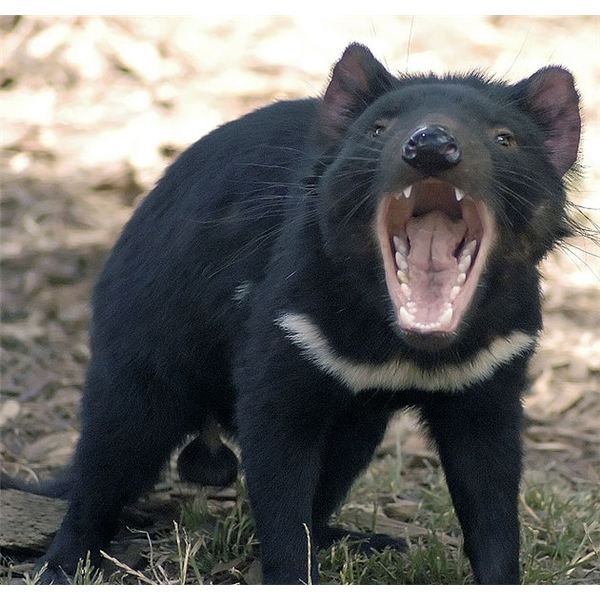Threats to the Tasmanian Devil: About Devil Facial Tumor Disease (DFTD)
About the Tasmanian Devil
Do you remember, in some of the classic Loony Tunes shorts, a spinning, crazed character called Taz? The short, brown animal with razor sharp teeth and a ravenous appetite? He would stalk characters, eat characters, and butt heads with an equally insane she-Taz. But he wasn’t just on the screen- the character was modeled after the real-life Tasmanian Devil, a marsupial native to the Australian island of Tasmania. And his race is almost extinct.
The real devils are interesting creatures. While they don’t travel in a whirlwind like Taz, they run a seven-minute mile and have the
strongest bite of any living mammal. Their most distinguishing features (besides the jaws) are their whiskers and ears. The long white whiskers near a devil’s nose help him to forage for food in the dark, and the ears help with orientation. Like many Loony Tunes characters, they see in black and white.
Tasmanian Devils are also Australian living landmarks, cultural icons as important as kangaroos and Aussie accents. The animal has given its name to soccer teams, basketball teams, and had its image stamped on Australian coins. Australia without the Devil is like Scotland without bagpipes.
Threats to the Tasmanian Devil
So why is this fascinating creature on the brink of extinction? The Devils are suffering from a cancer called Devil Facial Tumour Disease, or DFTD. The cancer’s origin is unknown, but scientists have discovered that it is highly contagious. After contraction of DFTD, large tumours form around the afflicted Devil’s mouth, interfering with feeding and leading to starvation. There is no cure yet, but scientists have quarantined healthy devils and removed the sick animals.
One of these research teams, led by Dr. Jeremy Austin of the University of Adelaide, is examining a critical feature of the devil decline: the impact of humans. Devils are particularly susceptible to DFTD because their gene pool is unusually small. Scientists don’t know whether this is a historical trend or is due solely to the encroachment of civilization on the devils’ territory. Using DNA and other genetic methods, Dr. Austin’s team is attempting to document the spread of DFTD and discover the source of the illness.
According to Dr. Austin, scientists must work quickly to “find a vaccine, eradicate the disease, and establish captive colonies”. However, it is impossible to know whether a cure exists; thus, most teams are trying to stop further spread of DFTD only through quarantines. It’s a good short-term solution, but it won’t prevent long-term population loss.
Taz is one of the best-loved characters on Loony Tunes. His frantic speech, insatiable hunger, and agile movements have charmed audiences for decades. But without a strong effort to stop DFTD, the disease will overtake the Australian devil population. Taz and his cronies, alas, may be no more.
Sources:
S. Wroe, C. McHenry, J. Thomason- “Bite Club”. Proceedings of the Royal Societies
https://www.sciencedaily.com/releases/2008/11/081103164725.htm
https://www.sandiegozoo.org/animalbytes/t-tasmanian_devil.html
